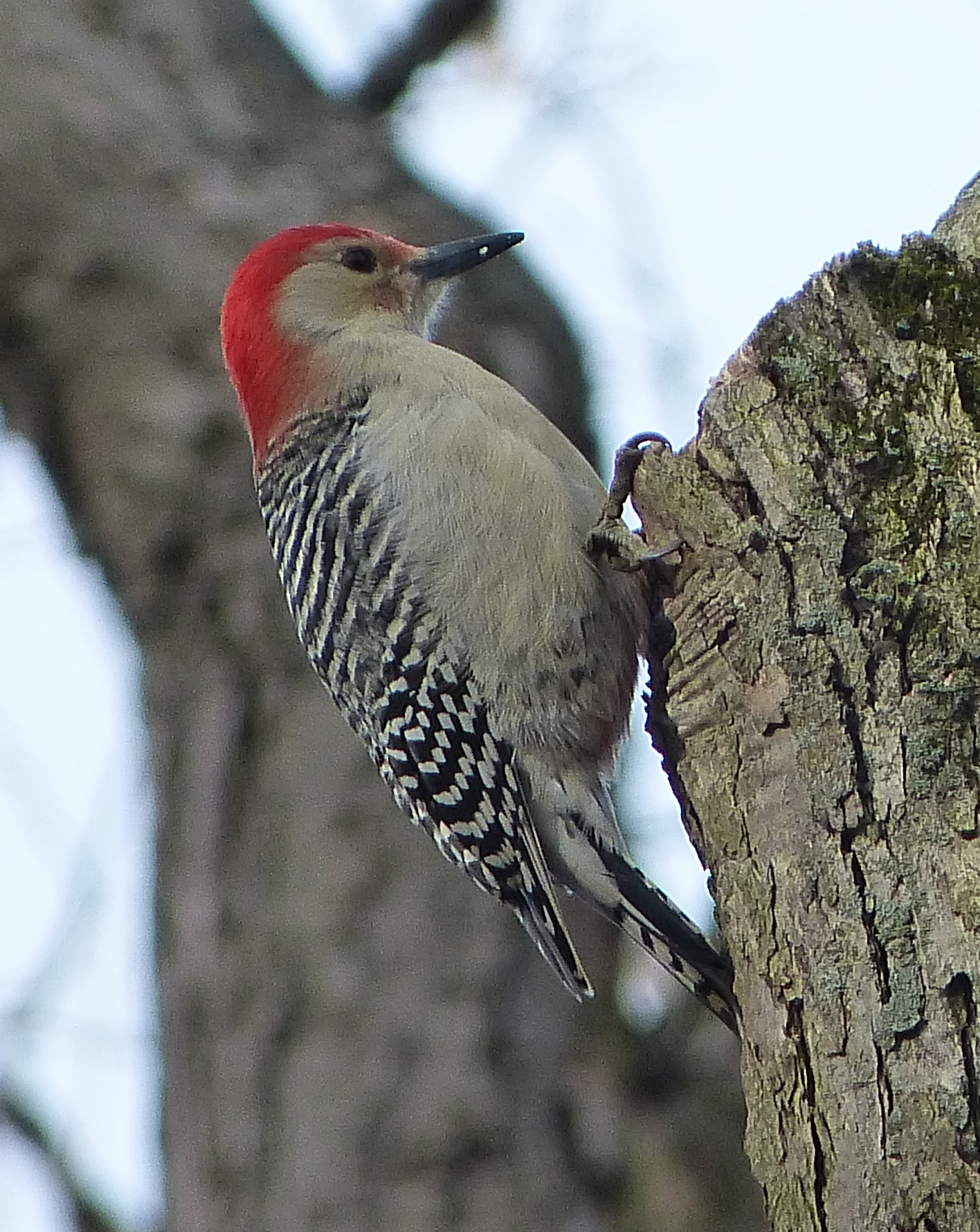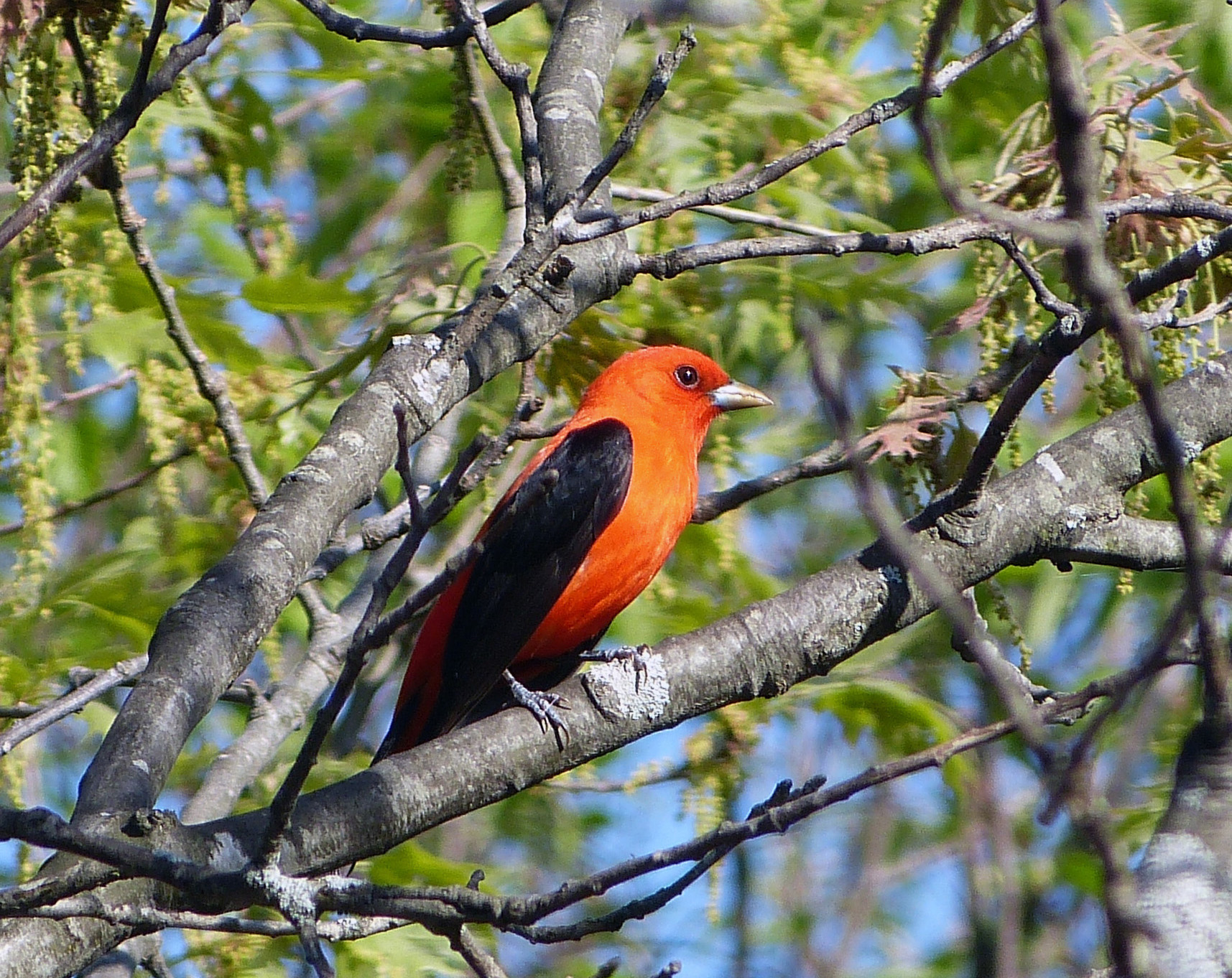Spring Series Finale at the Arnold
On Saturday morning I led the last of five spring bird walks at the Arnold Arboretum; 46 people showed up to get a glimpse of the tail end of the migration and enjoy the beautiful weather and some spectacular trees. I began the walk with my docent hat on; discussing the Tuliptree in full bloom in front of the main gate. What a lovely flower this Asian x American cross was displaying:
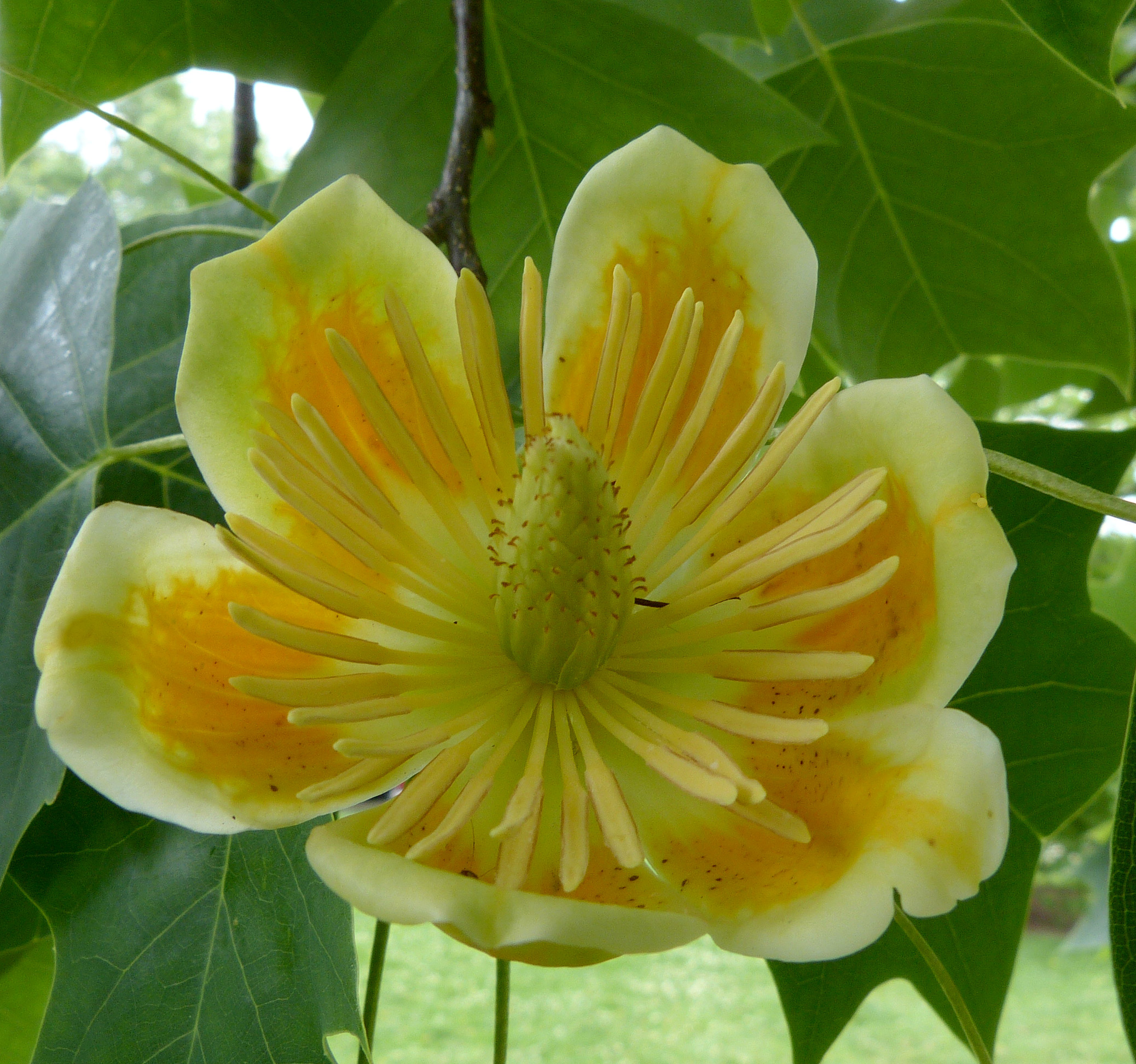
Tuliptree Liriodendron tulipifera x L. chinense 584-81-A
By then we had heard or seen several birds, including a flyover Great Blue Heron. As we did the circle up to the Leventritt Shrub and Vine Garden, past the lilacs and down to the ponds and back, we ticked off many of the resident birds and nesting migrants to be seen late in the spring. I had been seeing and hearing lots of Baltimore Orioles since the first of May, and several sharp-eyed birders were able to locate three active nests. Such lovely birds; and so talented in their nest-building skills:

Male Baltimore Oriole at hanging nest
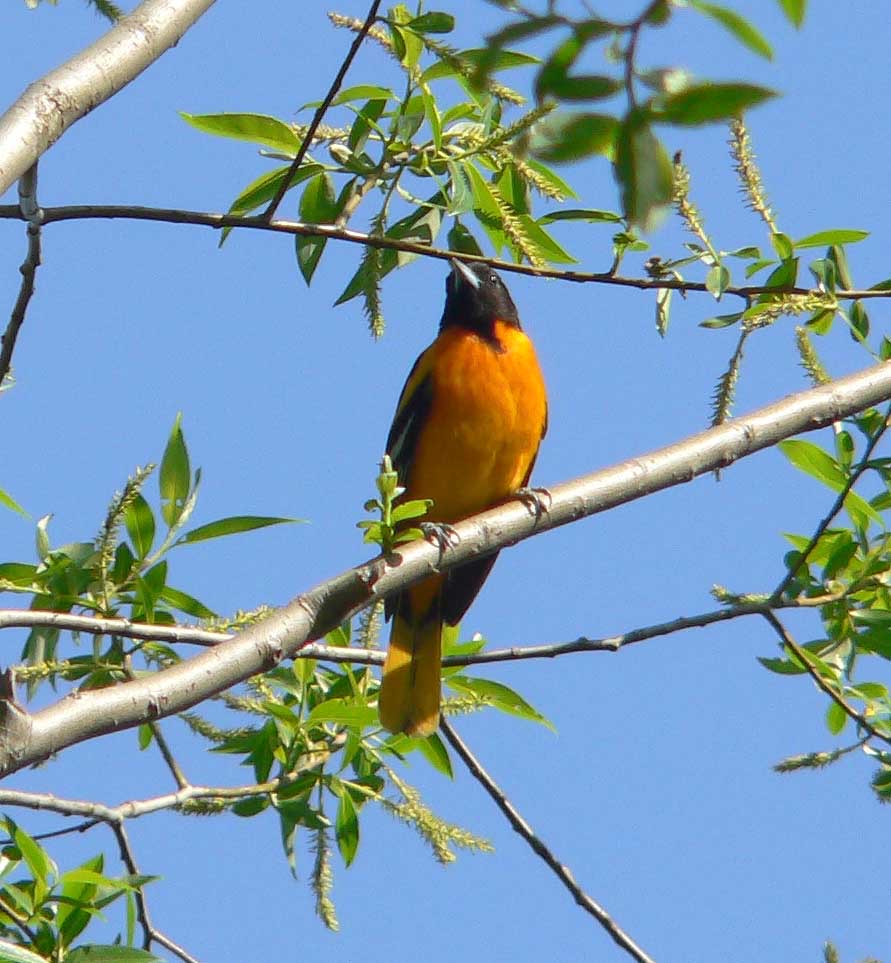
Baltimore Oriole, male
Orioles were the bird of the day. We tried to find the other, much less common, oriole found in the Arboretum, but didn’t succeed. If we had it would have looked like this:
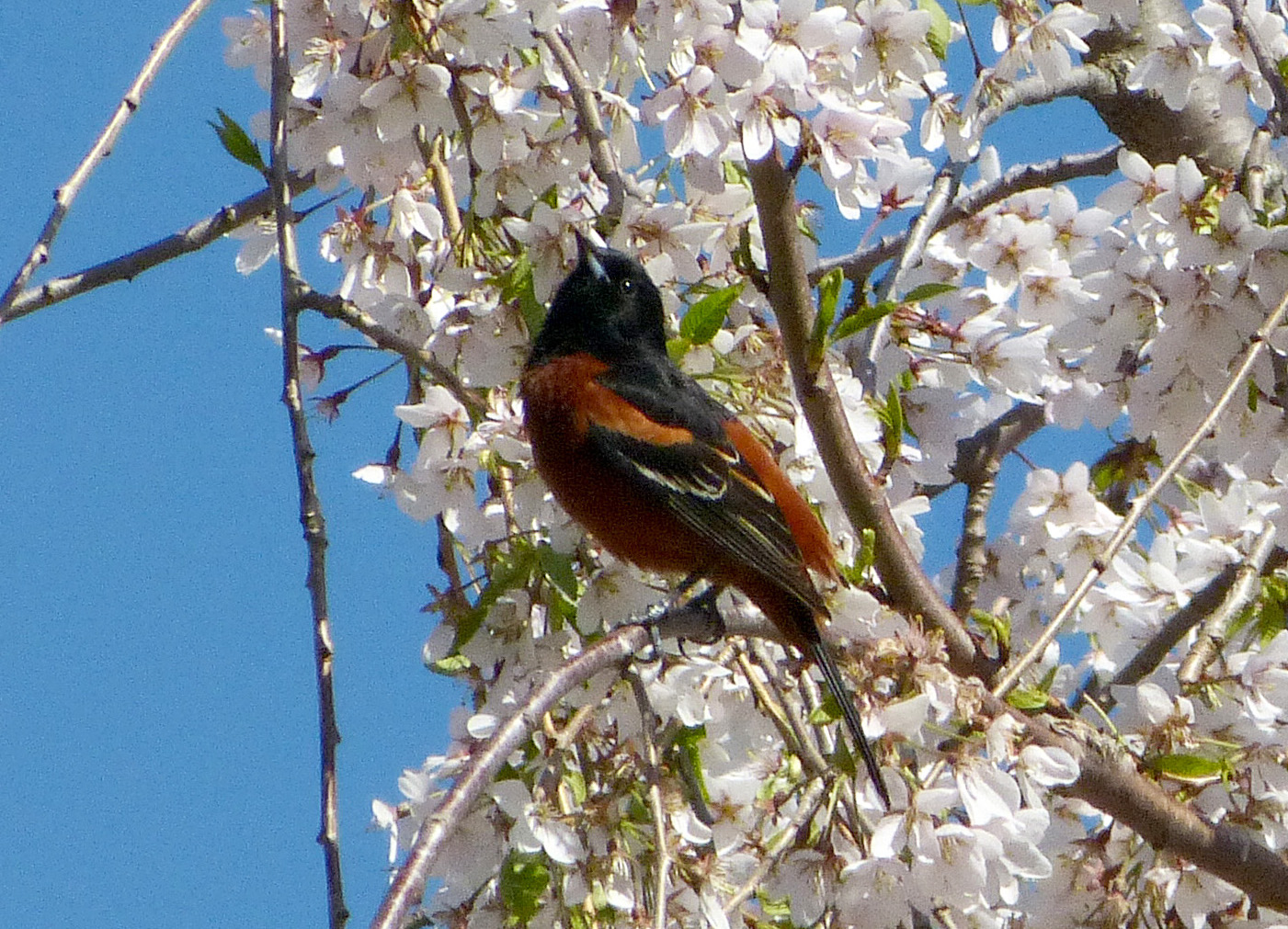
Male Orchard Oriole. Note the chestnut color replacing the vivid orange of it’s cousin the Baltimore Oriole above.
Early in the walk several small flocks of Cedar Waxwings flew by; a couple of them stopped for a distant look. Here’s a close-up:
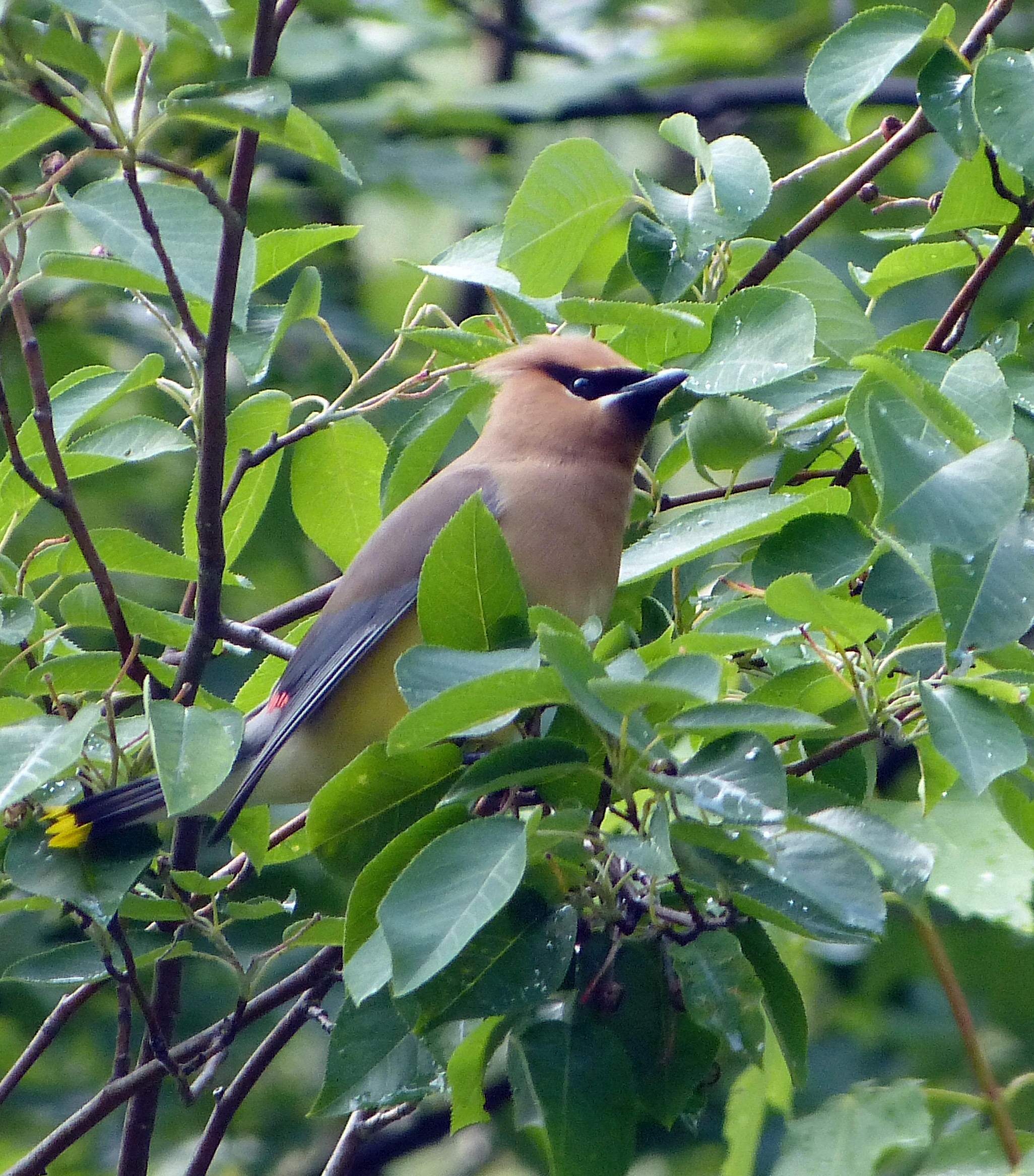
Cedar Waxwing
We heard two vireo species in the fully leafed out trees– Red-eyed and Warbling – but never saw one. The song of the Warbling Vireo is frequently heard in the Arboretum, where they nest every year. Here is a recording of it:
Warbling Vireo recording courtesy of Lang Elliott NatureSound Studio
Red-bellied Woodpeckers were also heard in several locations. It is a bird worth searching for:
Male Red-bellied Woodpecker
We also inspected several of the fifteen nest boxes that are scattered about on the AA grounds. In one of the boxes in Leventritt Garden we caught a House Wren peering out of the hole before it flew.
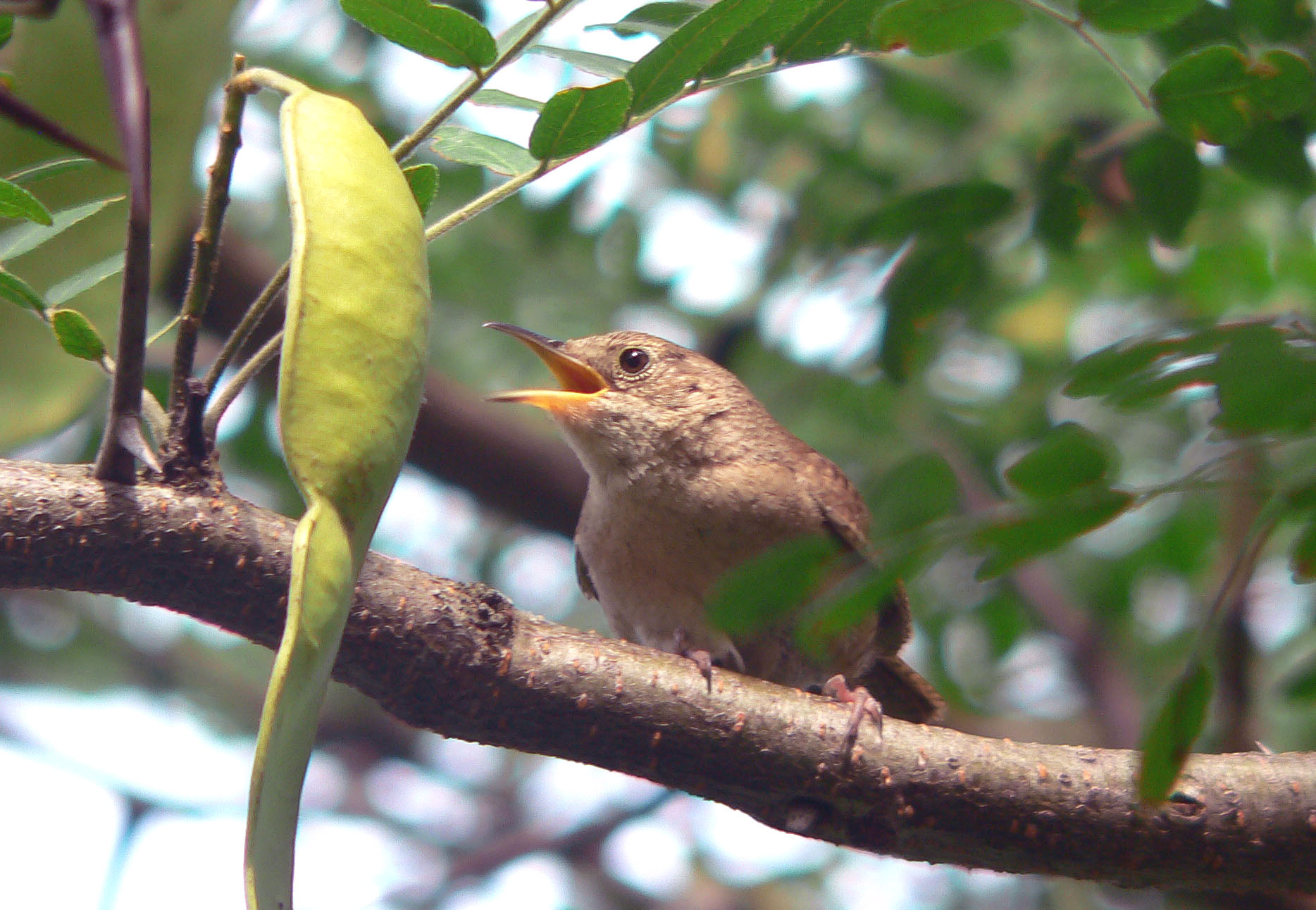
House Wren on a Honey Locust tree
We didn’t disturb the nest, but here is what we might have seen if we had:
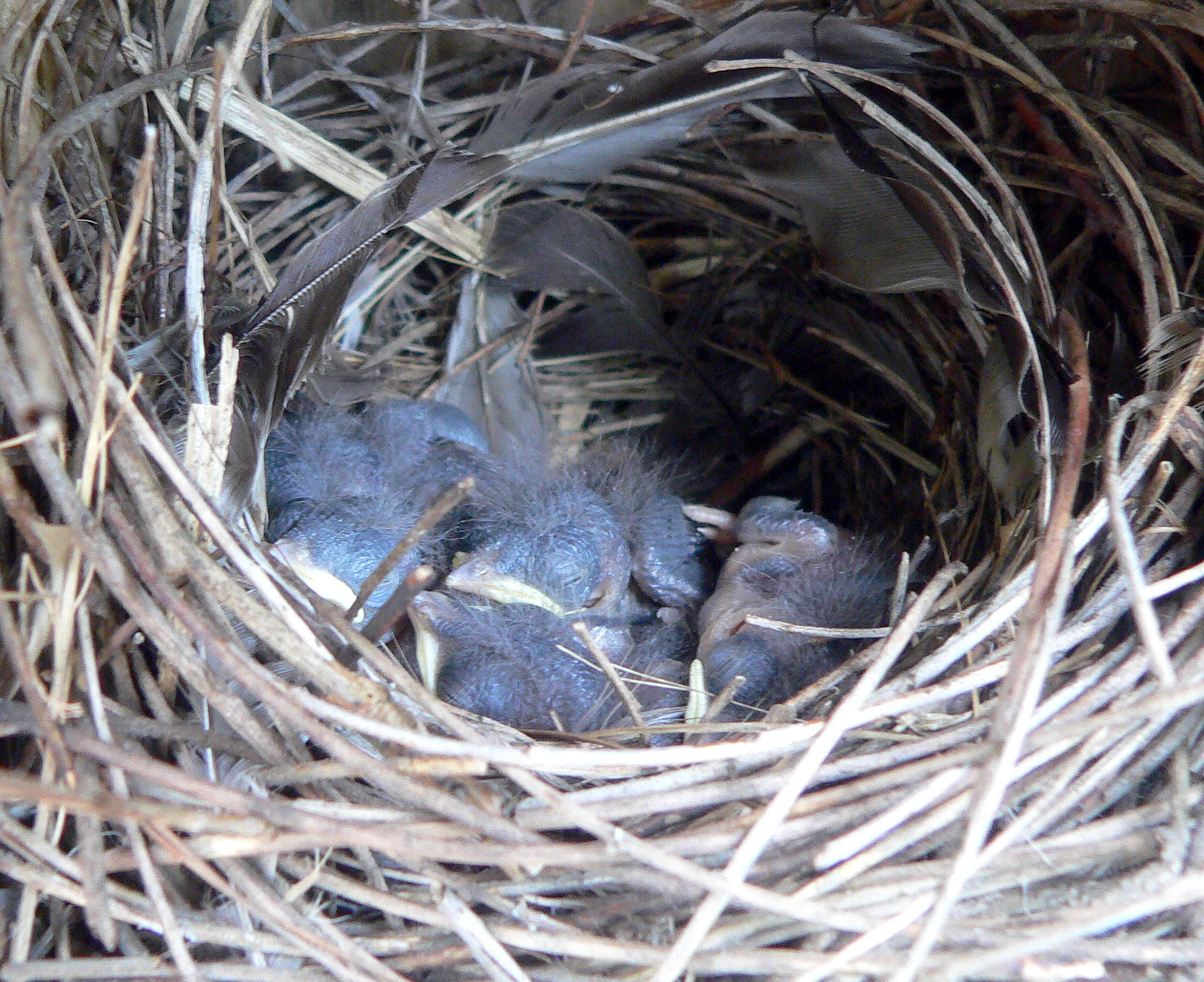
House Wren nestlings. The stick nest is typical of the species. This image was taken in 2006 during a survey of nest boxes. No birds were harmed during this survey!
Here is today’s eBird list:
- Arnold Arboretum, Suffolk, Massachusetts, US
- May 30, 2015 8:00 AM – 10:20 AM
- Protocol: Traveling
- 1.5 mile(s)
- Comments: BBC Walk. 58-70 sun and clouds
31 species, all species not seen by all
- Canada Goose 2
- Great Blue Heron 1
- Red-tailed Hawk 1
- Rock Pigeon (Feral Pigeon) 1
- Mourning Dove 5
- Chimney Swift 2
- Ruby-throated Hummingbird 1
- Red-bellied Woodpecker 2
- Northern Flicker 1
- Warbling Vireo 4
- Red-eyed Vireo 1
- Blue Jay 1
- Tree Swallow 3
- Black-capped Chickadee 1
- Tufted Titmouse 2
- White-breasted Nuthatch 1
- House Wren 1
- American Robin 25
- Gray Catbird 5
- Northern Mockingbird 2
- European Starling 5
- Cedar Waxwing 16
- Yellow Warbler 4
- Chipping Sparrow 3
- Song Sparrow 3
- Northern Cardinal 2
- Red-winged Blackbird 10
- Common Grackle 20
- Baltimore Oriole 10
- American Goldfinch 2
- House Sparrow 9
View this checklist online at http://ebird.org/ebird/view/checklist?subID=S23704600
This report was generated automatically by eBird v3 (http://ebird.org)
Those who joined the walk, and who scan this list carefully, will note the absence of a bird we thought we identified. High up in a tree I spotted a small bird which I initially thought was a flycatcher in the Empid. group. As some of us zeroed in on the distant bird we thought it showed a yellow rump before it flew, and declared it a Yellow-rumped Warbler. I commented that this was unusual since this warbler, common during the migration, should be long gone farther north by now. When I put the bird in the eBird system it brought me up short; “details please”, as this would be a rare sighting in Suffolk County at the end of May. They wanted a full description of the sighting, or a photograph. I reflected on the sighting and decided that in fact we had not seen this bird well enough for a certain identification, and deleted the bird from our list. Birding operates mostly on the honor system and most birders are honest. Like the cruiser sitting at the traffic light, eBird helps to keep us that way.
At the start of the walk, to whet the group’s appetite, I mentioned a Scarlet Tanager had been sighted close to our start just two days earlier. We didn’t see it, but here is an image I took two weeks ago in nearby Franklin Park:
Male Scarlet Tanager in Franklin Park
Maybe next year!
This was the last spring walk for the season. Check the Arboretum website later in the summer for the fall schedule of walks.
Good birding!

